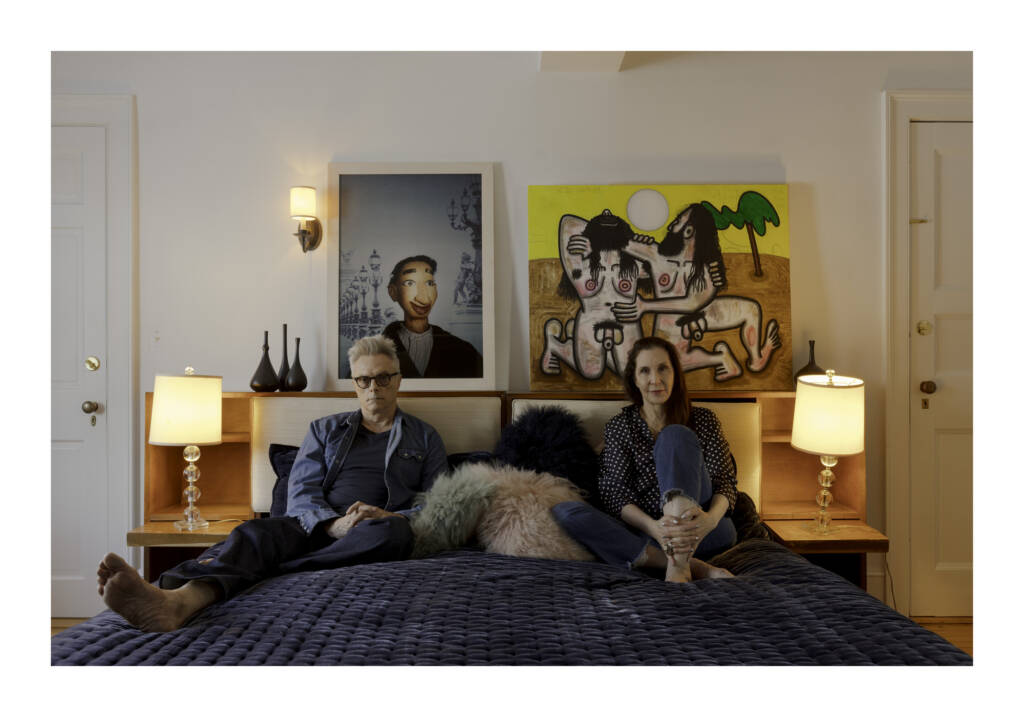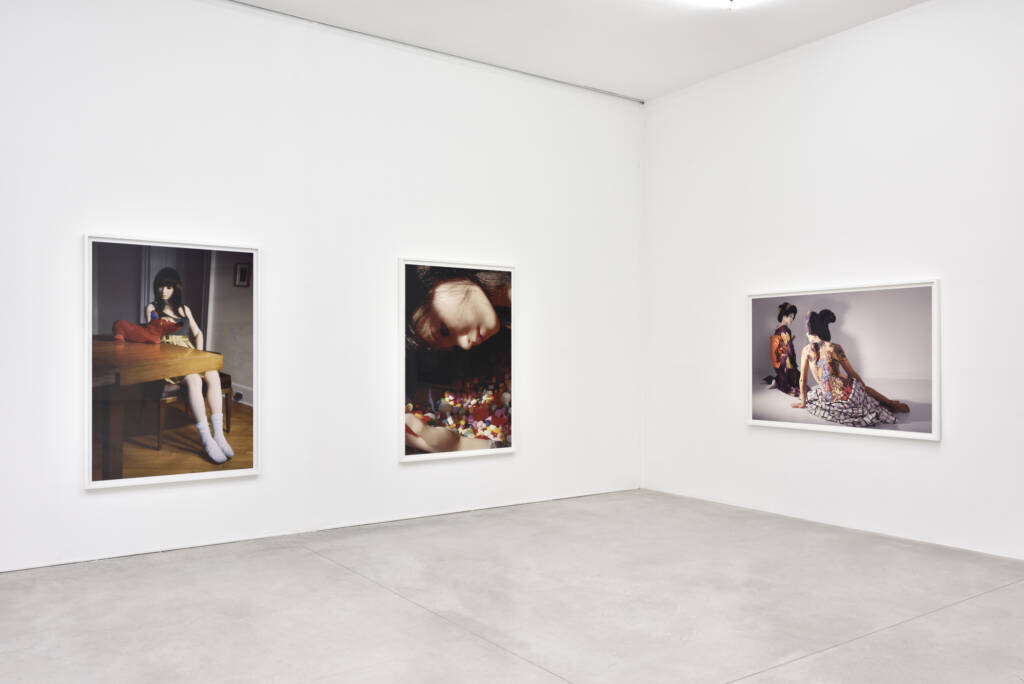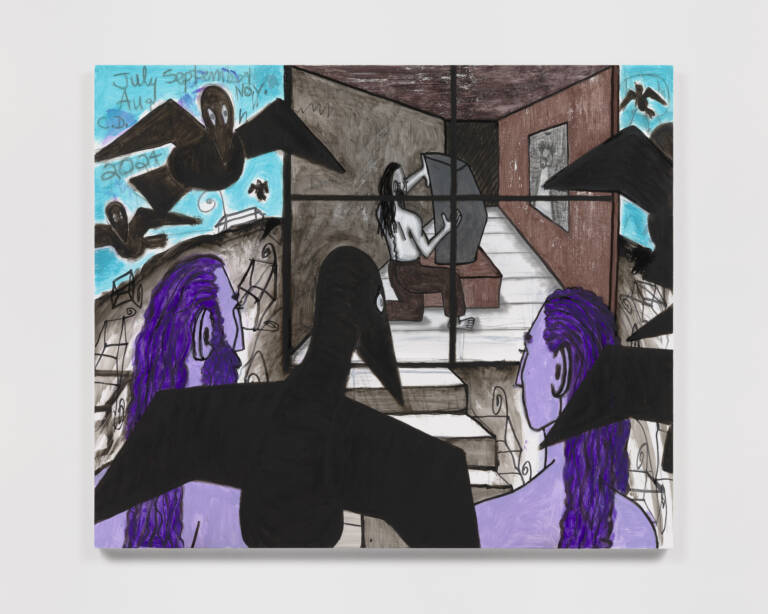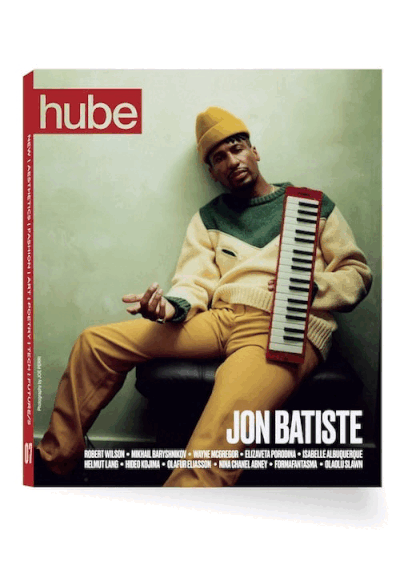


Photography by REBECCA FANUELE
What happens when two formidable artistic voices share not just a life but a continuous creative conversation? Laurie Simmons and Carroll Dunham have built distinct yet deeply intertwined careers, their work bouncing off each other in ways both conscious and subconscious. From Simmons’ staged photography exploring gender roles to Dunham’s raw, energetic paintings, their practices orbit, intersect, and diverge in unexpected ways. Recent exhibitions further illuminate their dynamic interplay — Dunham’s innovative solo show at Galerie Max Hetzler, Open Studio & Empty Spaces, highlights his evolving approach to myth-making and spatial construction, while their first joint presentation at Le Consortium in Dijon marks a landmark moment in their collaborative journey. In this conversation, the two reflect on artistic intimacy, the evolution of their respective works, and the nuances of making – and living with – art.
hube: Why does now feel like the right time for this joint exhibition, and how do you hope it positions your practices within the ongoing evolution of contemporary art?
LS: This show feels like a culmination of decades of shared experience, of existing in parallel yet distinct artistic worlds. It’s fascinating to see how our work operates together in this moment, especially with the current fluidity in contemporary art.
CD: I agree. There’s something intriguing about looking back at our trajectories and seeing how they align and diverge. This exhibition offers a chance to recontextualise our work – individually and in dialogue with one another.
hube: How has living together as two working artists shaped your daily life?
LS: It’s normal to us. I think people assume it must be difficult or competitive, but it’s not. We each have our space, our routines. We don’t hover over each other, but we always know what the other is working on.
CD: I think it’s shaped how we see the world. When you live with another artist, you develop a shared visual language, even if your work is completely different. There’s a kind of unspoken understanding.
hube: Do you critique each other’s work?
LS: Oh, all the time. Sometimes it’s helpful, sometimes it’s infuriating. We have different instincts – Carroll will push me to let things be rougher, looser. I’ll nudge him to consider the conceptual framework more deeply.
CD: I try not to take it personally when Laurie calls something I’m working on ‘too much’ – which happens often. (Laughs.) But I do think our best critiques happen in passing, when we’re not actively trying to critique but just responding naturally.
hube: Le Consortium places your works side by side, not just as individual artists but as a creative duo with intertwined histories. How does this setting reshape the perception of your individual legacies, particularly when seen in conversation with each other?
LS: It invites a different reading of our work. There’s something unexpected about viewing pieces you’re so familiar with in a new context, especially when placed in direct relation to someone else’s. Our legacies have always been connected in life, but seeing them intertwined in an exhibition space makes that more visible to an audience.
CD: We both have strong, independent voices, but when our work is positioned side by side, new dialogues emerge. Viewers might recognise similarities that even we hadn’t fully considered.
hube: The architecture and ethos of Le Consortium have a reputation for enhancing the dialogue between the artworks it houses. How did the physical space influence the curatorial choices for this exhibition?
LS: The space itself plays a huge role in how the work is received. We had to consider how pieces interact with the structure, how they breathe within it. Certain works resonate differently in this setting than they might elsewhere.
CD: The neutrality of the space allows for a fresh reading of the works. It removes external distractions and lets them speak more clearly to each other.

